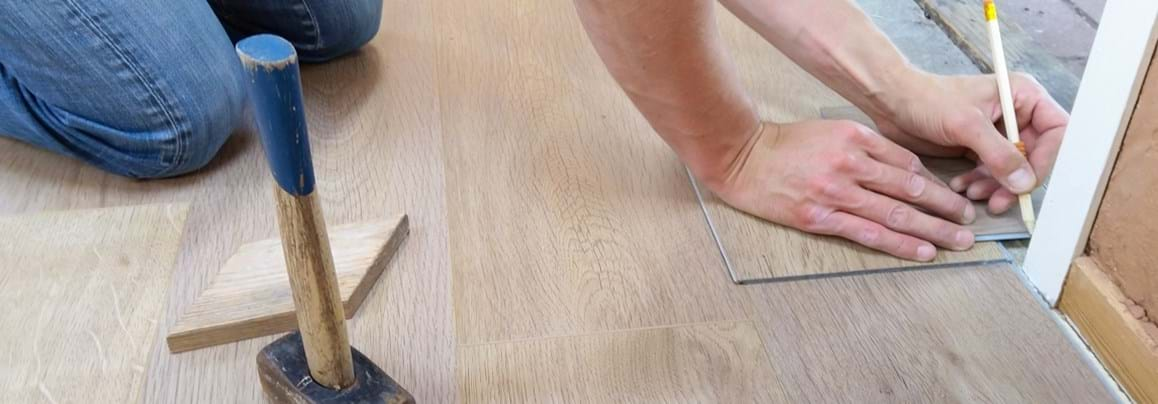How to...

This page gives you some handy tips on how to undertake some general repairs to your home.
- Unblock a sink
If your sink is blocked, have a go at clearing it yourself before calling us.
- In a dry sink, pour at least one cup of baking soda down the plughole. Then pour two cups of boiling water and wait a few minutes, next pour another cup of baking soda and immediately pour a cup of white vinegar down.
- Or try using a plunger. Make sure the plughole is covered in water to create an airtight seal for the plunger. Block the overflow with a dish cloth. Place the plunger over the plughole and gently push up and down.
- Or purchase a packet of soda crystals from a DIY shop or supermarket. Dissolve in some boiling water and pour the solution down the plughole.
To avoid a blocked sink, don’t pour fat down the drain and place a strainer over your plughole to stop food going down. These can also be used in showers to stop hair blocking the drain.
If you do call us out and the blocked sink has been caused by misuse, you will be re-charged.
- Tackle condensation
Are you having problems with condensation? It mainly appears during cold weather when there’s a lot of moisture in the air and can lead to damp and mould if it’s not tackled.
Try these simple steps to prevent it:
- Dry clothes outside if possible.
- Put lids on saucepans.
- Use cooker hoods and extractor fans.
- Keep furniture away from walls so the air can circulate.
- Don’t block vents or extractor fans.
- Keep your home reasonably warm.
- Keep bathroom and kitchen doors closed when washing or cooking.
If mould does occur, wash it with a mixture of 1 part bleach to 3 parts water or buy a fungicidal wash.
- Fill a hole in the wall
If you take down a picture and find the nail has left a hole in the wall, follow these simple steps.
- Use a knife to scrape away any loose plaster around the hole.
- Buy some caulk (filler) from a DIY store and apply it to the hole until it's filled in.
- Scrape away any excess filler.
- Once the filler is dry, sand down the area so it's level with the rest of the wall.
- Touch up the area with paint.
- Bleed a radiator
If your gas central heating isn't warming your home properly, or your radiators feel colder at the top than at the bottom, it could be because there are air bubbles trapped in the system. This means you need to bleed your radiators.
How to bleed a radiator
- Turn off your central heating and wait for the radiator to cool down.
- Find a radiator key. You can buy one cheaply from most hardware stores.
- Look for a small valve at the top of one end of your radiator. Insert the key and turn it counter-clockwise to open the valve. You should hear a hissing sound as air escapes
- Hold a kitchen towel or cloth under the key to catch any drips of water.
- When a steady stream of water squirts through the valve, retighten it.
- Look after your work surface
Remember that we don't replace work surfaces which have been damaged.
There are some simple things you can do to keep your kitchen work surface looking good.
- Prepare food using a chopping board rather than cutting directly onto the work surface.
- Don't use harsh cleaning products or scouring powders.
- Wipe up spills straightaway to stop them staining.
- Put hot pans down on heat resistant mats or stands to avoid making scorch marks.
- Don't put electric irons directly onto the work surface.
- Protect your work surface with a glass or plastic work top saver.
- Keep your paths nice
During the Summer months, weeds can get out of control on paths and drives.
Here's how to keep weeds at bay.
- Cut grass back to a neat edge using a weeding knife or lawn-edging tool so grass and weeds don't spread across a path.
- Tackle weeks quickly before they have chance to release seeds.
- Get a sharp knife and push it as deeply as possible into the gaps in the path to hook out weeds, roots and soil.
- Use a stiff broom to collect the moss, weeds and soil.
- If you have a gravel drive, push a hoe back and forth to remove weeds.
- Apply weed killer. If you need to dilute it, use a separate watering can just for chemicals, not for watering.
- Defrost a condensate pipe
If your condensate pipe freezes in the cold weather, your boiler will shut down.
Easy steps to restart a boiler
- The condensate pipe is usually a white or grey plastic pipe which travels from your boiler through the wall to your outside drain.
- If you think it has frozen, run your hands along the pipe to see if a section feels colder than the rest. This will be the blockage.
- Use a jug or watering can to pour warm water along the pipe until it has thawed. Don't use boiling water as it can damage the pipe.
- Restart your boiler.
- To prevent the pipe from freezing again, wrap it in old towels or buy some foam pipe insulation from a DIY shop.